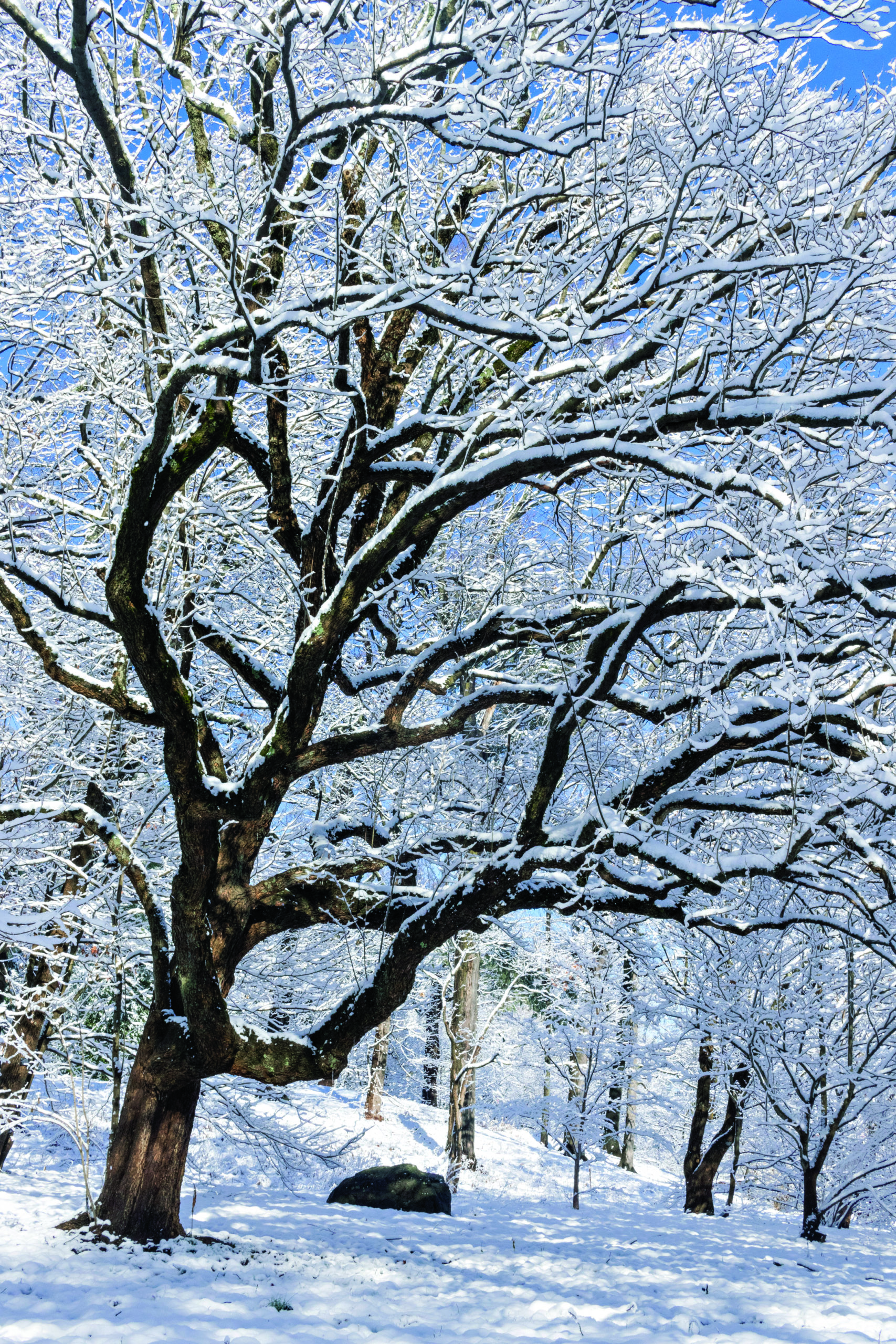On July 1, 1910, Ernest Henry Wilson was traveling through Yunyang County, China—then part of eastern Sichuan Province—collecting plant material for the Arnold Arboretum. The region is extremely mountainous, with footpaths snaking along vertiginous river valleys, through naturally formed rock tunnels, and past old fort barrack sites. Wilson photographed many large trees in the region, and his passage was crisscrossed by men carrying loads of salt and other commercial products. He photographed one of these men shouldering two large bundles of bark that were suspended from either end of a wooden rod. This was a shipment of du-zhong, a medicinal bark from the hardy rubber tree (Eucommia ulmoides), which was prescribed then, as it still is today, for kidney and liver ailments, among other health issues.

Wilson never observed wild populations of Eucommia ulmoides—the only species in its family, Eucommiaceae—although he frequently saw two or three medium-sized trees planted near houses. Overharvesting and deforestation were likely (and continue to be) the cause for the rarity of sightings in the wild, but bark for medicine was abundant in cultivation. This medicinal use, however, was not the sole interest of botanists in Europe and North America. When the bark is harvested, dried, and gently broken, a latex-like product becomes visible. This characteristic aroused commercial interests.
In 1911, Charles Sprague Sargent, the founding director of the Arnold Arboretum, wrote, in the Bulletin of Poplar Information, about considerable excitement that had arisen around the species. “This is a hardy tree … to which a good deal of space has recently been given in the daily papers as the ‘Hardy Rubber-tree,’ and as a possible source of rubber in cold climates,” Sargent wrote. If true, this use would provide a considerable breakthrough, given that commercial rubber was produced from a Brazilian species, Hevea brasiliensis, which could only be cultivated in the tropics. Five years later, however, Sargent returned to the subject with a more dismal assessment, noting that the plant “has been of more interest to the energetic newspaper report than it can ever be to the manufacturer of rubber goods.”
The Arboretum’s oldest specimen of Eucommia ulmoides (accession 14538*A) grows along Linden Path, not far from the Hunnewell Building. The plant was received from James Veitch & Sons nursery in 1907 and was likely collected on an earlier Wilson expedition. The tree now graces visitors with its thick, sturdy branches that extend upward in a stair-like fashion. The bark is deeply ridged and furrowed, and has become a home for various moss and lichen. The elm-shaped leaves emerge in the spring. When gently pulled apart, the leaves reveal strings of latex within, each as thin as spiders’ silk. Although Sargent’s predictions about the commercial use of this latex product would prove accurate in North America and Europe, the Flora of China indicates that the rubber-like product has been successfully used for insulating electrical cables, sealing pipes, and even filling teeth. Medical research has increasingly pointed to the benefits of the bark for lowering blood pressure.
Citation: Richardson, K. 2020. Promise of Bark: Eucommia ulmoides. Arnoldia, 77(3): 40.
Today, wild populations of Eucommia ulmoides are heavily protected. The International Union for Conservation of Nature lists the species as vulnerable to extinction in the wild and estimates that fewer than one thousand mature individuals remain in widely scattered populations, mostly on steep slopes that are difficult to access. Collectors on recent Arboretum expeditions have never witnessed the species in the wild, although, like Wilson, they have observed the trees in cultivation. Whether wild or cultivated, Eucommia provides a direct reminder about the importance of plants beyond the garden walls: as medicine, as dreams of rubber, and as livelihoods for those who harvest and share what the plants have provided.
Kathryn Richardson is a curatorial assistant at the Arnold Arboretum.